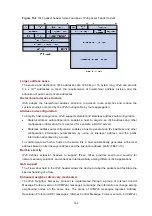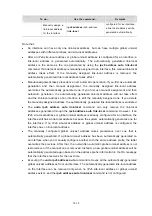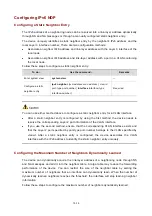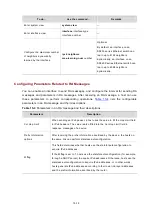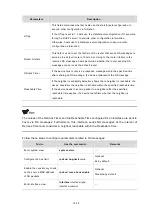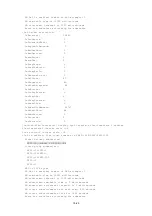
15-10
2) If the MTU supported by a forwarding interface is smaller than the packet, the device
discards the packet and returns an ICMPv6 error packet containing the interface MTU to
the source host.
3) After receiving the ICMPv6 error packet, the source host uses the returned MTU to limit the
packet size, performs fragmentation, and sends the resulting packet to the destination host.
4) Step 2 to step 3 are repeated until the destination host receives the packet. In this way, the
source host decides the minimum MTU of all links in the path to the destination host.
IPv6 Transition Technologies
Before IPv6 dominates the Internet, high-efficient, seamless IPv6 transition technologies are
needed to enable communication between IPv4 and IPv6 networks. There are several IPv6
transition technologies, which can be used in different environments and periods, such as dual
stack (RFC 2893), tunneling (RFC 2893), and NAT-PT (RFC 2766).
z
Dual stack is the most direct transition approach. A network node that supports both IPv4
and IPv6 is called a dual stack node. A dual stack node configured with an IPv4 address
and an IPv6 address can forward both IPv4 and IPv6 packets. For an upper layer
application that supports both IPv4 and IPv6, either TCP or UDP can be selected at the
transport layer, whereas the IPv6 stack is preferred at the network layer. Dual stack is
suitable for communication between IPv4 nodes or between IPv6 nodes. It is the basis of all
transition technologies. However, it does not solve the IP address depletion issue because
each dual stack node must have a globally unique IP address.
z
Tunneling is an encapsulation technology that utilizes one network protocol to encapsulate
packets of another network protocol and transfer them over the network. For more
information about tunneling,
see Tunneling Configuration in the Layer 3 - IP Services
Configuration Guide
.
z
Network Address Port Translation – Protocol Translation (NAPT-PT) is usually applied on a
device between IPv4 and IPv6 networks to translate between IPv4 and IPv6 packets,
allowing communication between IPv4 and IPv6 nodes. It performs IP address translation,
and according to different protocols, performs semantic translation for packets. This
technology is only suitable for communication between a pure IPv4 node and a pure IPv6
node.
The S5820X and S5800 series Ethernet switches do not support NAT-PT.
Protocols and Standards
Protocols and standards related to IPv6 include:
z
RFC 1881: IPv6 Address Allocation Management
z
RFC 1887: An Architecture for IPv6 Unicast Address Allocation







